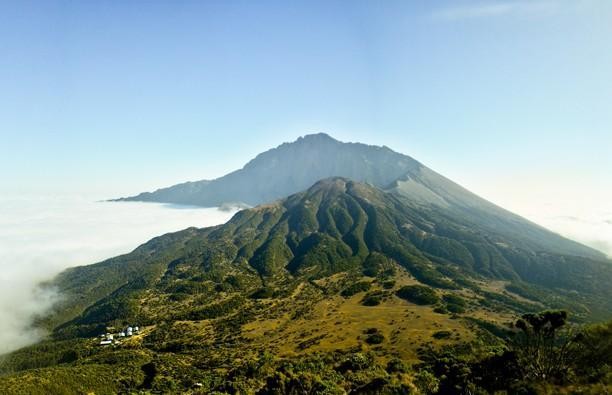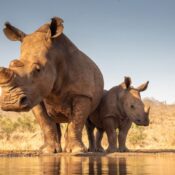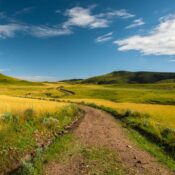Arusha national park

Arusha national park
This beautiful Park has often been called a little gem and rightly so. It is only ½ an hour by tarmac road from Arusha town, the safari center of northern Tanzania. With mountains, valleys, lakes, and small plains clothed in green, it has a wonderful feeling of peace and solitude. It is dominated by Mount Meru, which at 4,566 m (14,980 ft) is the 3rd highest free standing mountain in Africa.
Wildlife
It is habitat for a wide variety of mammals including bushbuck, giraffe, elephant, leopard (rarely seen!), monkeys, duiker, baboon, buffalo, waterbuck and hippo. The birdlife is spectacular with over 450 species recorded. The game viewing track that winds around the Momella Lakes is a great way to get close to and watch lesser and greater flamingo. Arusha National Park is probably the best place in Tanzania to watch black and white colobus monkeys, and also to listen to their loud and guttural territorial calls echoing through the forests.
Mount Meru
Mt. Meru is a dormant volcano about 1 ½ million years old. One side of exploded out about 8,000 years ago as Meru’s caldera lake was transformed into super-heated steam by an inner eruption. One of the largest landslides of mud and rock ever measured worldwide took place, forming hillocks, valleys and small lakes. The geologists estimate that before Mount Meru blew its top it was a tall, symmetrical volcanic spire almost as high as Mount Kilimanjaro.This interesting and broken terrain is now clad in patches of forest and bush at the lower end and pristine rain forest on the upper slopes.
Ngurdoto Crater
At the bottom end of the Park is another small, but complete, volcanic crater called Ngurdoto, which has recently been opened to guided hikes. It is a secret paradise, with a lake on one side and elsewhere clothed in virgin forest and a network of open grassy glades. A track follows the rim with look-out points established where one can relax with a picnic and look down into this secret world of swamps and plains and spot buffalo, warthog and occasional elephant enjoying its tranquility Wild animals quickly habituate to being close to horses. These treks are led by experienced guides who are careful about guest safety. This activity needs prior arrangement with the tour operator, and every guest will be expected to show an ability to ride horses.



